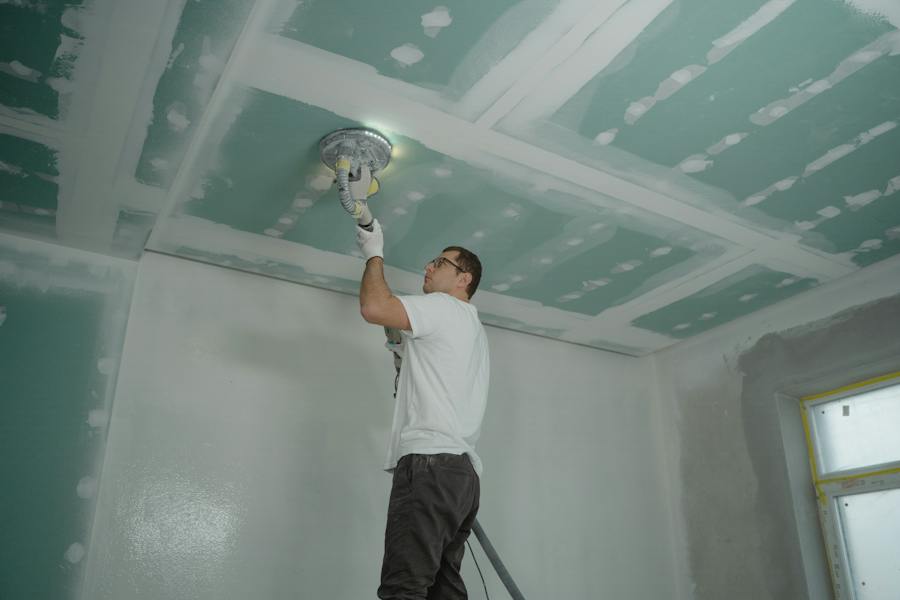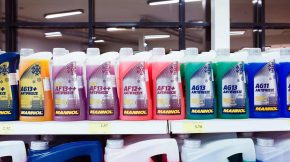Is Spackle The Same As Joint Compound: Distinguishing Spackle From Joint Compound
Share
In-home improvement and DIY projects, the terms “spackle” and “joint compound” are often used interchangeably, confusing many. While both materials are essential in repairing and finishing walls, they are different. Understanding the distinctions between spackle and joint compound is crucial for achieving the best results in your renovation endeavors. In this article, we’ll explore the nuances between these two commonly used substances, shedding light on their compositions, applications, and when it’s appropriate to use one over the other. So, let’s dive into the fascinating world of spackle and joint compounds to clarify their roles and help you make informed choices for your next project.
Is Spackle The Same As A Joint Compound?
No, spackle is not the same as a joint compound. While both are used in wall repair and finishing, they differ. Spackle is primarily designed for minor repairs and has a lightweight composition, making it ideal for filling in small holes and cracks. On the other hand, the joint compound is commonly used in drywall installation and finishing. It has a thicker consistency and is more suitable for taping and sealing joints. Understanding these differences is essential for selecting the suitable material for your project.
Key Differences Between Spackle And Joint Compound
Here are some critical differences between spackle and joint compounds:
Composition:
Spackle is typically composed of gypsum powder mixed with binders and water. This combination results in a lightweight and easy-to-spread paste. The lightweight nature of the spackle makes it ideal for quickly filling small holes, cracks, and imperfections on walls and ceilings. A joint compound, known as drywall mud, consists of gypsum dust or powder blended with polymers, preservatives, and other additives. This mixture gives it a thicker and heavier consistency than spackle, making it more suitable for a broader range of drywall applications.
Purpose:
Spackle is primarily designed for minor surface repairs and touch-ups. It excels at patching small holes left by nails or screws, as well as covering minor blemishes and cracks. Its primary purpose is to create a smooth surface for painting or further finishing. The joint compound serves a more comprehensive role in drywall installation and finishing. It is used explicitly for taping and finishing the joints and seams between drywall panels, ensuring a seamless and level surface for painting or adding texture.
Application:
Applying spackle is relatively straightforward and user-friendly. It is often done with a putty knife or a spatula, and it can be smoothed out easily to achieve a seamless surface. Joint compound application requires more skill and technique, especially when taping and mudding drywall joints. It is commonly applied with a drywall knife or trowel, and achieving a smooth finish may take practice.
Drying Time:
Spackle dries relatively quickly, often within an hour or less, depending on the type. Quick-drying spackles are available for even faster results. Joint compound, particularly setting-type compounds, has longer drying times. It can take several hours to a day to dry completely, depending on factors like humidity and the thickness of the application.
Sanding And Finish:
Spackle usually requires minimal sanding to create a smoother finish suitable for painting or minor touch-ups. Joint compound often necessitates extensive sanding and smoothing to achieve a seamless finish suitable for painting or texturing walls. This step is critical for achieving a professional-looking result.
Suitability For Various Projects:
Spackle is best suited for small-scale repairs, such as filling nail holes, dents, or minor cracks. It is an excellent choice for quick fixes and cosmetic touch-ups. A joint compound is essential for larger-scale projects, including drywall installation, taping, mudding, and finishing. It offers the versatility and durability required for professional drywall work in construction and renovation.
When To Use Spackle
Spackle is a versatile material for specific wall repair and surface preparation tasks. Knowing when to use spackle can help you achieve a smooth and flawless finish in various situations. Here are some common scenarios where spackle is the ideal choice:
- Small Holes And Cracks: Spackle is valuable for addressing minor wall imperfections, such as small holes and cracks. These issues can arise from various sources, including nails, screws, or the natural settling of a building. Spackle’s composition, typically a mix of gypsum powder, binders, and water, makes it lightweight and easy to manipulate. This makes it an excellent choice for filling in these small gaps effectively. Applying spackle to such imperfections not only conceals them but also creates a uniform surface for further finishing.
- Patchwork: Spackle is the ideal tool to repair a specific damaged area on your wall. Whether dealing with a hole left by a removed wall hook or an accidental impact that has damaged the wall’s surface, spackle can swiftly and neatly mend the affected section. This repair ensures the damaged area becomes virtually invisible, resulting in a seamless and fully restored surface.
- Surface Imperfections: Spackle is a versatile material for addressing a range of surface imperfections. These may include dings, dents, or shallow gouges that can detract from the overall aesthetics of your walls. By applying spackle and carefully smoothing it out, you can effectively hide these blemishes, achieving a consistent and smooth surface ready for painting or any additional finishing touches.
- Nail And Screw Indentations: Over time, walls can accumulate indentations and marks from nails, screws, and other fasteners used to hang pictures, shelves, or decorations. Spackle is an excellent solution for covering and concealing these marks. After applying a layer of spackle, allowing it to dry, and then sanding it down to a smooth finish, the spackled area blends seamlessly with the surrounding wall. As a result, there are no visible signs of the previous fasteners, leaving your wall looking pristine.
- Trim And Molding Gaps: Small gaps can often appear between the molding and the wall during the installation or replacement of trim, baseboards, or crown molding. Spackle is the perfect material for filling these gaps and creating a polished, finished appearance. Once the spackled areas are painted or stained to match the trim, they integrate seamlessly, providing a professional and cohesive look to the room.
- Touch-Ups: Spackle is an invaluable resource for minor touch-ups and repairs between larger renovation projects. It’s a versatile tool for addressing everyday wear and tear, such as scuffs, small nicks, or minor wall damage. Conducting these touch-ups helps you maintain your home’s overall appearance, keeping it fresh and well-maintained.
- Pre-Painting Preparation: Properly preparing your walls is essential before embarking on a painting project. Spackle plays a critical role in achieving a professional-looking finish. Applying spackle to any imperfections on the walls, such as small holes or blemishes, creates a smooth and uniform surface that allows the paint to adhere evenly. Once the painting is complete, this results in a more aesthetically pleasing and flawless final appearance.
- DIY Home Improvement: Spackle is a DIY enthusiast’s best ally. Its user-friendly nature and ease of application make it accessible for individuals looking to tackle home improvement projects themselves. Whether you’re redecorating, renovating, or preparing your home for sale, spackle empowers you to refresh and revitalize your walls and ceilings with minimal effort and expense. Its versatility and ability to handle minor repairs and enhancements make it an essential tool for DIY enthusiasts and homeowners.
When To Use Joint Compound
Joint compound, also known as drywall mud, is a versatile material used in various aspects of installation and finishing. Understanding when to use joint compound is crucial for achieving a professional and polished result in your construction or renovation projects. Here are several scenarios where using joint compound is essential:
Drywall Installation: The joint compound plays a pivotal role in installing drywall sheets. After affixing the drywall panels to the wall or ceiling framing, gaps and seams inevitably appear between the panels. A joint compound bridges and seals these seams, ensuring a continuous surface. The joints would be visible with this step, and the wall or ceiling would need a unified appearance.
Taping And Mudding Joints: Taping and mudding are crucial to achieving seamless and robust drywall joints—a joint compound embeds drywall tape over the joints between panels. The compound securely bonds the tape, creating a strong and durable connection. Subsequent layers of joint compound are applied in a tapered manner to feather out the seams and eliminate any ridges or bumps. This meticulous process results in smooth and inconspicuous joints.
Finishing Drywall: After taping and mudding the joints, the joint compound is applied to finish the entire drywall surface. This step involves covering screw or nail indentations, smoothing out any remaining imperfections, and creating an even canvas for paint or other finishes. Achieving a flawless finish requires applying thin, consistent coats of joint compound and sanding between coats to achieve the desired smoothness.
Texturing Walls And Ceilings: When texture is desired on walls or ceilings, joint compound is the foundation for creating these textured surfaces. By adjusting the consistency and application method of the compound, various textures, such as the popular orange peel or knockdown patterns, can be achieved. The joint compound’s adaptability makes it an ideal medium for creating customized and aesthetically pleasing finishes.
Repairing Drywall Damage: A joint compound is a valuable tool for repairing damaged drywall. Whether you have small holes from nails or more significant gaps and gouges, joint compounds can effectively fill these voids. After application, the compound is smoothed and allowed to dry before being sanded and painted. The result is a seamlessly repaired surface that blends seamlessly with the surrounding drywall.
Sealing Drywall Corners: Properly treating drywall corners is essential to prevent cracks and achieve a clean finish. A joint compound creates smooth, protective corner beads, typically made of metal or plastic. These corner beads are affixed to the corners of walls or ceilings and then coated with additional compound layers. This process results in crisp, finished corners that are visually appealing and structurally sound.
Bottom Line
In summary, understanding the differences between spackle and joint compound is essential for successful home repairs and renovations. Spackle is best suited for minor touch-ups and small repairs, while joint compound is crucial for more extensive drywall work and finishing. Choose the suitable material based on the specific needs of your project to achieve the best results and a professional finish.
FAQ’s
What Is Spackle, And What Is A Joint Compound?
Spackle is a lightweight paste for patching small holes, cracks, and imperfections on walls and ceilings. It typically consists of gypsum powder, binders, and water. In contrast, joint compound, also known as drywall mud, is a thicker mixture primarily used for installation, taping joints, finishing, and creating textured surfaces. It includes gypsum dust or powder blended with polymers and additives.
How Do They Differ In Composition?
Spackle is formulated to be lightweight, making it easy to spread and work with for minor repairs. It has a creamy consistency. On the other hand, the joint compound has a thicker consistency due to the inclusion of additional polymers and additives, giving it more body and durability for larger drywall applications.
What Are Their Main Purposes?
Spackle is primarily designed for minor repairs, such as filling nail holes, dents, and small cracks. Its purpose is to create a smooth and paintable surface. In contrast, the joint compound serves various roles in drywall work, including taping and finishing joints between drywall panels, covering screws or nails, and creating textured surfaces.

















